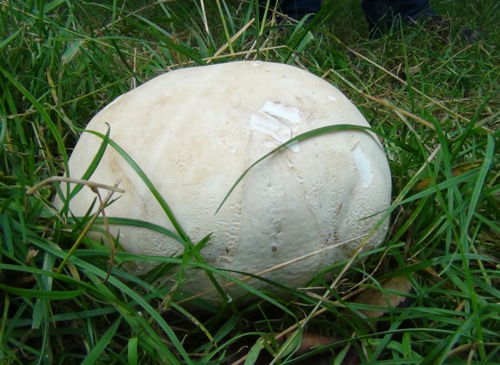Top 5 Safest Wild Mushrooms in the UK - Easy to Identify
There are approximately 15,000 types of wild fungi here in the UK.
Be very careful when foraging for mushrooms, it is always best to go with someone more experienced.
Never eat anything unless you're certain it's edible.
Here is a list of 5 easily identifiable mushrooms found in Britain.
1.)Hedgehog Fungus (Hydnum repandum)
Identification
If you've found a white mushroom that looks like a hedgehog underneath; you can be certain you've found a hedgehog fungus (providing you are in the UK). You may find other mushrooms in the UK with spikes under the cap, but these aren't white.When picking the Hedgehog Fungus, scrape the spines off before you take them home. By scraping them off where you find them, you're potentially seeding more mushrooms which could be harvested in the future!
They are generally found August to October.
Taste
The Hedgehog Fungus is a treat, with a mushroomy flavour, that is slightly nutty and sweet. They are slightly firmer than shop bought mushrooms meaning you will get more of a meaty bite from them. Use them in any dish you would normally use mushrooms!
2.) Grey Oyster Mushrooms (Pleurotus ostreatus)

Identification
Oyster Mushrooms are a common edible recognisable by their oyster/fan shaped cap. Check for decurrent gills, gills that are attached to and run down the stem. The cap is usually 2-10 inches across (5-25 cm) & smooth, with no warts or scales.They normally grow in a shelf-like formation with overlapping clusters.
They are saprotrophic, meaning they feed on dead material, in this case wood. You will find them growing on logs or dying trees all year round.
TasteYou may have already used oyster mushrooms if you are a mushroom fan.
They are widely available in shops, due to how easy they are to cultivate.
They can be eaten raw or cooked, they taste great and keep their texture well.

Similar in appearance to Cauliflower,it is one of the safer mushrooms to pick.
With fattened lobes looking similar to a sea sponge, brain or cauliflower it is unique in appearance.
They can be light brown, buff to yellow/grey to creamy white.
Normally found on the roots of conifers, commonly pine but can be found at the base of trunks or stumps between August and November. An almost identical mushroom is Sparassis spathulata, also known as Wood Cauliflower and is equally edible.
Taste
4.) Scarlet Elf Cup (Sarcoscypha cocinea)

Easily identified by its beautiful scarlet colour and cup like shape, the appropriately named Scarlet Elf Cup is hard to miss!
Young specimens are goblet shaped, the stem becomes less noticeable with age as they become cup-shaped. Thin fleshed, pale on the outside and normally 1/3rd of an inch to 2 inches (1-5cm) in diameter.
December through to to March is when you are most likely to find them.The only other mushroom in Britain that you could mistake these for is the Ruby Elf Cup. It has the same features with a deeper colouring. It is equally as edible.
Taste
Reasonably firm in texture, they have a lovely subtle earthy flavour. They are great in salads and you can use them in any dish you would normally use mushrooms in.
5.) Giant Puffball (Calvatia gigantea)

Identification
When young and smaller in size they could be confused with other puffballs, potentially even Stinkhorn Eggs or Amanita. It is best to only harvest them when mature so as you can be certain you have found an edible species. Do not eat if the flesh has begun to yellow, they are best eaten when the flesh is white.Commonly found from July to September, normally in fields or meadows, however they can also be found in woodland.
Taste
In my opinion the Giant Puffball is very tasty, with a rich, earthy, and even nutty flavour.
The texture on their own can let them down, they are best battered or cooked in breadcrumbs.
You can also use them as you would Tofu or in place of Aubergine (Eggplant).
When trying wild mushrooms for the first time it is best to try a little at a time, after cooking thoroughly.